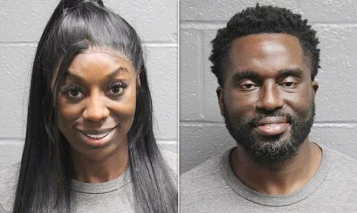
It was déjà vu all over again when news broke that a convicted killer in Texas had confessed to 93 murders.
The news media was quick to label 79-year-old Samuel Little as America’s “most prolific serial killer”.
The FBI has “confirmed about half” of Little’s confessions, although no bodies have been unearthed so far. He has recounted 93 murders from memory.
It all began with two cold case files pulled from a dusty Miami-Dade warehouse. Little’s recollections of the 2 murders appeared to match the evidence in the files.
Detectives claim they didn’t feed him any of the details about the cold cases. They just let him talk. Authorities promised to take the death penalty off the table if he confessed to multiple murders. So he did.
“The more you tell us, the more pictures we can show you,” Miami-Dade Police detective David Denmark remembers telling Little.
His detailed confessions were uncanny, according to the Washington Post, “from the cement arch he claims he drove under before choking Miriam Chapman to the way he buried Mary Brosley with her leg sticking out because the dirt was so hard.”
But, as the Washington Post points out, officials may have unwittingly provided those details to the killer.
Denmark insists this is not a repeat of the now infamous Henry Lee Lucas case.
In 1983, Lucas, already on trial for murdering one elderly woman, became a household name when he confessed to 100 more murders “out there somewhere.”
The Texas Rangers believed his stories. The news media wanted to believe him. And soon enough, dozens of eager law enforcement officials, prosecutors and reporters from all over the country lined up to interview Lucas in jail.
The 100 murders Lucas confessed to soon grew to 600 murders. The news media went into a feeding frenzy.
Lucas’s lies were exposed when a reporter extracted a confession from him that he made the whole thing up.
But Denmark insists Little’s case is different because interrogation techniques have improved since the 1980s.
“We knew what the deal was because [Little] had given these details without even talking to us,” Denmark told The Washington Post.
All the feds have to go on are Little’s elaborately detailed confessions and the colorful drawings that used to line the walls of his prison cell. There are roughly 50 victims depicted in the artwork. Little claims he created the images of his victims from memory.
The feds are so desperate to close cold cases, that they compiled an online gallery featuring Little’s drawings. Their hope is that the paintings will jog the memories of family members whose loved ones went missing or were murdered between 1970 and 2005.
One man, who was 5-years-old when his mother was murdered, claims he recognized her from one of the drawings. CBS News program “60 Minutes” compared the drawing to an old photograph of the woman. There is no resemblance between the drawing and the woman in the photo.

But the feds are convinced that there is enough of a resemblance to close the cold case. And so on. And so on.
The feds and the news media believe Little is a “prolific serial killer”, but others remain skeptical.
One Washington Post reader wrote: “This developmentally challenged bum just likes to watercolor faces of women. He wants Dr. Pepper, Cheetos, and an audience of gullible law enforcement.”
And a YouTube viewer wrote, “When is a confession, without any bodies, verifiable evidence?”
For inmates like Little, confessing to nearly 100 murders is better than sitting alone in a 6×8 cell for 23 hours a day.
Little is currently in a prison in Texas.





